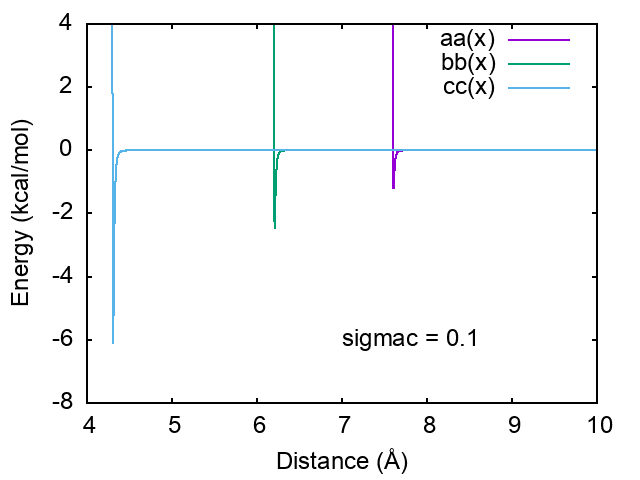Hi, I am so sorry if this has already been asked or is addressed in the documentation and/or introductory materials/courses, please let me know if I should ask this elsewhere: I have a few general questions about the minimum effective particle radius (sigma) parameter for defining pair_style gayberne potentials.
- What is the physical meaning of this parameter and where does it fit into LAMMPS’ simulation of particles interacting based on Gay-Berne potentials?
- The documentation recommends that we set the minimum effective particle radius to the minimum of the three shape diameters of the particles involved in an i,i interaction. Why is this practice recommended?
- More on the documentation’s recommendation, should this recommended practice still be followed when describing potentials between dissimilar particles - in other words, is it also recommended to set the minimum effective particle radius to the minimum of the three shape diameters of either atom type of the particles? (Ex: for describing a potential between Species A with shape diameters 3 ru, 4 ru, 6 ru and Species B with shape diameters 2 ru, 8 ru, 7 ru, I should set sigma = 2 ru?)
Of course, if the answers to any of these questions are “we don’t know what your simulation needs, try things on your own and see”, please let me know. Thank you very much for your time!
Best,
springboy
